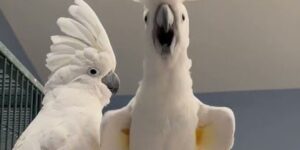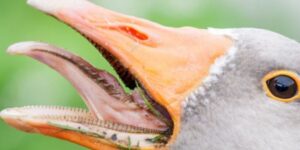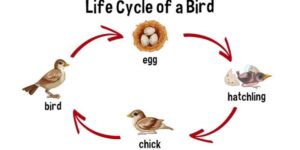Introduction
The Hancock Bird Species List is a detailed collection of bird species found in the Hancock region, located in the northern part of the country. Birdwatchers, conservationists, and researchers use this list to gain a deep understanding of the birdlife in the area. The list is dynamic, regularly updated with new species and additional information as researchers discover more about the local birds. For anyone interested in the avian biodiversity of the region, this list serves as an invaluable resource.
The Importance of the Hancock Bird Species List
Birdwatching has grown into one of the world’s most popular outdoor activities. The Hancock region, with its varied ecosystems ranging from wetlands to forests, provides a rich habitat for numerous bird species. By compiling a detailed list of these species, researchers and birdwatchers can track population changes, observe trends, and pinpoint threats to these birds’ survival. The list also plays a vital role in conservation efforts, especially for endangered or rare species in the region.
Species Diversity in Hancock Region: Hancock Bird Species list
Hancock boasts an extraordinary variety of bird species. The region’s diverse environments support birds of all sizes, families, and behaviors. Some species migrate seasonally, while others breed and nest here year-round. Some birds visit Hancock temporarily during their long migratory routes, offering a unique opportunity for birdwatchers to spot species that don’t call the region home throughout the year.
Migratory Birds in Hancock
Migratory birds frequently pass through the Hancock region on their long journeys. These birds depend on the area’s abundant resources to rest, feed, and recharge before continuing their migration. Ducks, geese, and shorebirds are some of the migratory species that make Hancock a crucial part of their seasonal journey. Birdwatchers can observe species that typically do not reside in the region, thanks to their temporary visits.
Resident Birds
Hancock also supports a variety of birds that remain year-round. Forest-dwelling species such as woodpeckers, hawks, and owls make up this category. Birds that inhabit grasslands and wetlands, like sparrows, herons, and swans, can be found throughout the year. These birds have adapted to the region’s environment and offer valuable insights into the overall health of the ecosystem.
Endangered Species in Hancock
Unfortunately, some species in Hancock face the looming threat of extinction. Factors such as habitat destruction, climate change, and human activity endanger many of these species. The Hancock Bird Species List includes endangered birds like the California Condor and the Peregrine Falcon. Conservation efforts have been vital in helping protect these species, but ongoing monitoring and protection are necessary to ensure their survival.
A Closer Look at the Hancock Bird Species List
Birds in the Hancock region belong to various families based on their physical traits, behavior, and habitat preferences. Grouping these species in such a manner helps provide a clearer picture of the bird diversity in the area.
Waterfowl

Waterfowl are among the most commonly observed birds in the Hancock region. These species, which include ducks, geese, and swans, thrive in wetlands, rivers, and lakes. Some species migrate through the region, while others make Hancock their permanent home. Mallard Ducks, Canada Geese, and Trumpeter Swans are among the most frequently spotted species in the area.
Raptors
The Hancock region also hosts several raptor species, which include birds of prey like hawks, eagles, and owls. These birds patrol the skies, hunting for food. The Bald Eagle, known for its white head and tail feathers, is a particularly iconic bird of the region. Additionally, the Red-tailed Hawk and Barn Owl are commonly seen in Hancock.
Songbirds
Songbirds, or passerines, represent the largest group of birds in the Hancock region. These small, colorful birds are known for their beautiful songs. Sparrows, finches, and warblers are the most common songbirds found in Hancock. Species like the American Robin, House Finch, and Yellow Warbler are some of the area’s familiar songbirds.
Shorebirds
Shorebirds, found along coastlines, estuaries, and riverbanks, are another group commonly observed in Hancock. These birds include sandpipers, plovers, and herons, which frequently inhabit the region’s wetland areas. Greater Yellowlegs and Killdeer are examples of shorebirds that thrive in Hancock. These species are critical to maintaining the health of the region’s ecosystems by regulating plant and animal populations in coastal environments.
Game Birds
Game birds, which hunters have historically pursued for sport or food, also thrive in Hancock’s open woodlands and grasslands. These species, including pheasants, quails, and grouse, play an important role in the region’s biodiversity. The Ring-necked Pheasant and Northern Bobwhite Quail are examples of game birds that can be found in Hancock.
Hummingbirds and Other Small Birds
Hummingbirds, though small, are another fascinating group found in Hancock. These tiny birds are known for their rapid wingbeats and ability to hover. The Ruby-throated Hummingbird is the most common species in the area. These birds are vital pollinators and add an element of beauty and agility to the region’s birdlife.
The Role of Birdwatchers and Conservationists
Birdwatchers play an important role in observing and protecting the bird species in Hancock. By recording sightings and documenting bird populations, they contribute valuable data to scientific studies. Local conservationists also dedicate themselves to protecting bird habitats and addressing the challenges that endangered species face in the region.
Challenges Facing Bird Species in Hancock: Hancock Bird Species list
While the region’s biodiversity is impressive, Hancock’s birds face numerous challenges. Habitat loss is one of the most significant threats to local species. As urbanization and development spread, natural habitats get destroyed. This forces birds to either adapt to altered environments or relocate, often with limited success.
Climate change exacerbates these issues. Rising temperatures and unpredictable weather patterns disrupt the timing of bird migrations and breeding cycles. For instance, some migratory birds may arrive too early or too late in the region, missing crucial resources that they depend on.
Additionally, invasive species present a major challenge. Predators like cats and raccoons, as well as competing species like European Starlings, disrupt local ecosystems and threaten native bird populations.
How to Contribute to Bird Conservation in Hancock
Helping with bird conservation in Hancock doesn’t require a huge time or financial investment. Individuals can take several simple steps to support local birdlife:
- Support Conservation Groups – Donating time, money, or resources to organizations working to preserve bird habitats is an impactful way to make a difference.
- Practice Sustainable Habits – By adopting environmentally responsible practices—like reducing waste, conserving water, and supporting sustainable agriculture—you can help protect the ecosystems birds rely on.
- Participate in Citizen Science – Birdwatchers can help by participating in bird surveys and reporting sightings of rare or endangered species. Many local organizations offer opportunities for citizen science contributions.
- Create Bird-Friendly Environments – If you live in or near Hancock, consider planting native plants that provide food and shelter for birds. Creating habitats that support local wildlife ensures their long-term survival.
Conclusion: Hancock Bird Species list

The Hancock Bird Species List is an essential tool for understanding the bird diversity in the Hancock region. It offers birdwatchers, researchers, and conservationists valuable insights into the species that inhabit the area. By tracking bird populations and contributing to conservation efforts, we can ensure that Hancock’s birdlife continues to thrive. Whether you’re an experienced birdwatcher or someone new to the world of birds, the Hancock Bird Species List offers an invaluable resource for exploring and preserving the beauty of this vibrant region.


